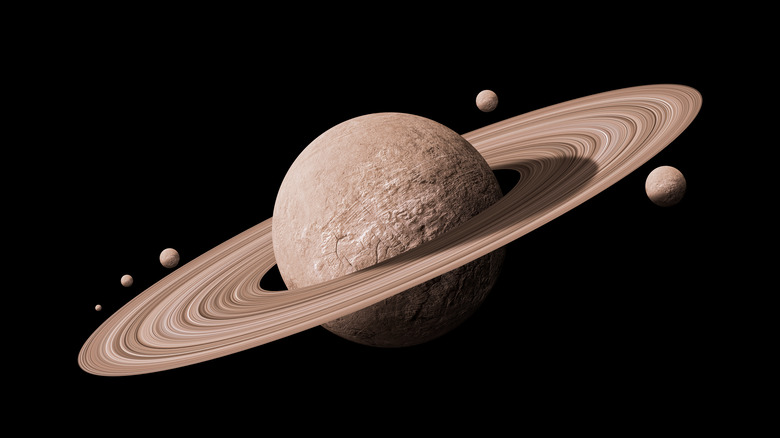Saturn has 53 known moons and 29 moons still awaiting their official confirmation
Saturn’s Impressive Moons: A Closer Look at the Solar System’s Jewel

Saturn, the sixth planet from the Sun, has always captivated astronomers and enthusiasts alike. Its beautiful rings, composed of ice and rock, make it a stunning sight to behold. However, what truly sets Saturn apart is its extensive collection of moons. With 53 known moons and 29 awaiting official confirmation, Saturn takes the crown for having the most moons in our entire solar system.
While many are familiar with Saturn’s famous moons, such as Titan and Enceladus, there is an incredible diversity of smaller moons orbiting this gas giant. These moons come in various shapes and sizes, each with its own unique characteristics and history.
One of the most prominent moons of Saturn is Titan, which is larger than the planet Mercury. Titan is an intriguing moon, shrouded in a thick atmosphere primarily composed of nitrogen, with traces of methane and other hydrocarbons. This atmosphere makes Titan the only moon in our solar system to have a dense atmosphere, resembling that of early Earth. Scientists believe that studying Titan could offer valuable insights into the conditions that led to the development of life on our planet.

Another fascinating moon orbiting Saturn is Enceladus. Despite being one of Saturn’s smallest moons, it has garnered significant attention due to its active geysers. These geysers release water vapor into space, hinting at the possibility of a subsurface ocean beneath its icy crust. Scientists have even detected organic molecules within these plumes, raising the tantalizing prospect of finding life beyond Earth.
Beyond these well-known moons, there are still 29 awaiting official confirmation. These celestial bodies are currently being studied by scientists, who carefully analyze their orbits, compositions, and characteristics to confirm their status as true moons of Saturn. This process involves precise observations and calculations to ensure that potential moons meet the necessary criteria for official recognition.
Saturn’s extensive collection of moons showcases the complex dynamics of its gravitational interactions. Some moons are caught in resonance with one another, creating awe-inspiring patterns and influencing each other’s movements. For instance, the moons Epimetheus and Janus share an unusual relationship, swapping orbits every few years as they approach each other.
As we continue to explore Saturn and its moons, each new discovery brings us closer to understanding the mysteries of our solar system. These celestial bodies serve as windows into the past, offering clues about the planet formation process and the potential for life beyond Earth.
To learn more about the fascinating world of Saturn and its multitude of moons, please visit NASA’s official website.
Tags
Related Posts
Quick Links
Legal Stuff